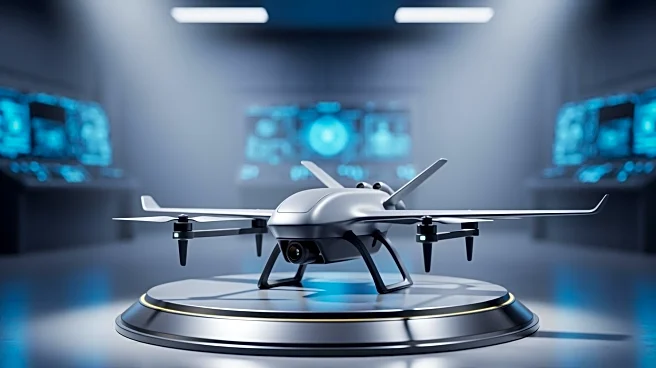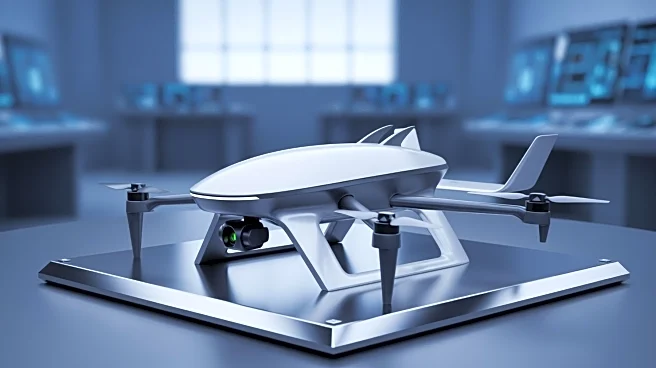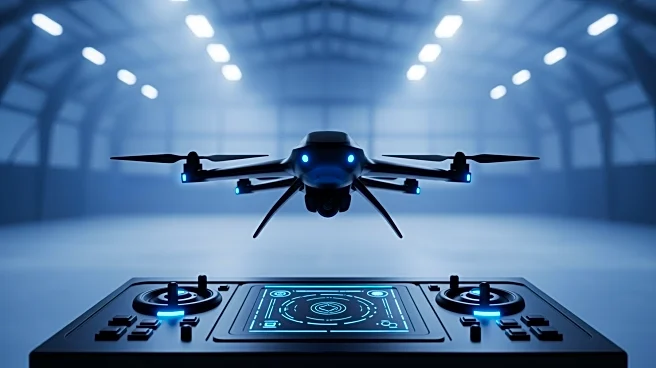What's Happening?
In a recent demonstration by the British Army, Helsing's HX-2 AI strike drone successfully hit five targets, showcasing its capabilities in precision and efficiency. In contrast, the rival Virtus drone faced
significant challenges, including a battery fire that resulted in one of its unmanned drones crashing into nearby woodland. The demonstration highlighted the competitive landscape in drone technology, with Helsing's HX-2 emerging as a strong contender. The event was described as a disaster for Stark, the company behind Virtus, due to the technical failures experienced during the demo.
Why It's Important?
The successful performance of Helsing's HX-2 drone in the UK demo underscores the growing importance of advanced drone technology in military applications. As nations increasingly rely on AI-driven systems for defense, the ability to accurately and efficiently hit targets becomes crucial. Helsing's success may bolster its position in the defense sector, potentially leading to increased interest and investment in its technology. Conversely, the setbacks faced by Virtus highlight the challenges and risks associated with developing cutting-edge drone systems, which could impact its reputation and future opportunities in the market.
What's Next?
Following the demonstration, Helsing may pursue further opportunities to showcase its HX-2 drone to potential military clients, leveraging its successful performance to secure contracts and partnerships. Virtus, on the other hand, may need to address the technical issues encountered during the demo and reassess its development strategies to improve reliability and performance. The competitive dynamics in the drone industry are likely to intensify, with companies striving to innovate and enhance their offerings to meet the evolving demands of military and defense sectors.











